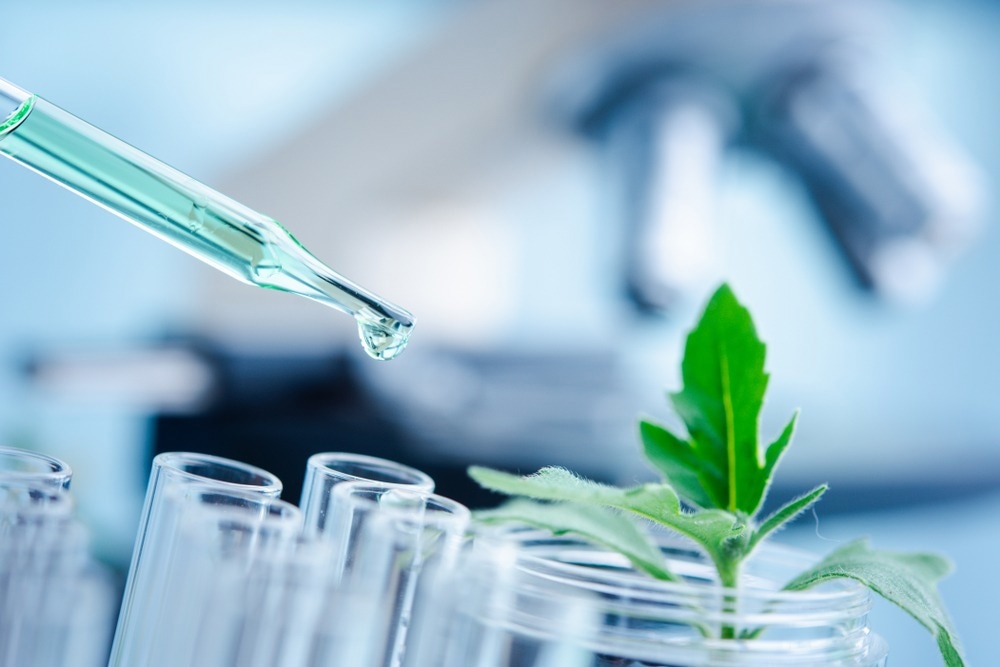In a recent review published in Life, researchers explored plants as an extensive resource of molecules with potential therapeutic action against severe acute respiratory syndrome coronavirus 2 (SARS-CoV-2) and debunked misconceptions.
 Study: Plant Extracts and SARS-CoV-2: Research and Applications. Image Credit: LookerStudio/Shutterstock
Study: Plant Extracts and SARS-CoV-2: Research and Applications. Image Credit: LookerStudio/Shutterstock
Background
The continual emergence of novel SARS-CoV-2 variants has threatened the efficacy of coronavirus disease 2019 (COVID-19) vaccines and therapeutic agents such as antiviral drugs and monoclonal antibodies. Several products have been obtained from plants to inhibit and/or neutralize pathogenic microbes, including viral pathogens. Plant-based extracts demonstrated efficacy against SARS-CoV-1 in 2002, and further research is required to tap their therapeutic potential against SARS-CoV-2.
About the review
In the present review, researchers reviewed existing data on probable plant-based COVID-19 therapeutics.
SARS-CoV-2 infection pathophysiology, therapies, and combat mechanisms
SARS-CoV-2 spike (S) protein subunit 1 (S1) receptor-binding domain (RBD) attaches to the ACE2 (angiotensin-converting enzyme 2) receptors to invade the host. In contrast, subunit 2 (S2) is involved in fusing with the host cellular membranes. Therefore, one strategy to inhibit SARS-CoV-2 invasion is to prevent SARS-CoV-2 S-ACE2 binding interactions. Another strategy of SARS-CoV-2 inhibition is to prevent viral growth in the host by inhibiting protease enzymes, including the Mpro (main protease), 3CLpro (3C-like protease), and PLpro (papain-like protease).
The 3CLpro enzyme regulates the processing of the replicase polypeptide 1a protein and the replicase polypeptide 1ab protein into proteins essential for SARS-CoV-2 functions. Therefore, identifying molecules that can inhibit the cysteine proteases could probably widen the therapeutic landscape of COVID-19.
Existing therapeutic drugs against SARS-CoV-2 include remdesivir, baricitinib, anakinra, tocilizumab, etesevimab, bamlanivimab, regdanvimab, casirivimab and imdevimab in combination (REGN-COV-2), and sotrovimab. However, COVID-19 vaccines have proven to be the most effective means of combating SARS-CoV-2.
COVID-19 vaccines are largely based on four main technologies. Messenger ribonucleic acid (mRNA) vaccines (Spikevax and Comirnaty) utilize a strain of RNA from the CoV, which instructs the human cells how to build the S protein that is then identified by the immunological system, creating antibodies for combat. In vector-based vaccines (such as Sputnik V), a fragment of the genomic material of the virus is inserted into another virus (vector, usually adenovirus), which, when within host cells, releases the virus and instructs cells to make S protein copies.
Protein subunit vaccines (by Sanofi and Novavax) comprise only antigenic portions of the virus when within host cells, enabling S protein recognition and the generation of anti-S antibodies by the host. A few vaccines (such as Sinopharm) are based on the classic approach of injecting the entire inactivated SARS-CoV-2 viral organism into the host to elicit immunological defenses by the host.
Plant metabolites of therapeutic value against SARS-CoV-2
Two small molecules, luteolin (11 µM) and TGG (tetra-O-galloyl-β-D-glucose, 5.0 µM), obtained from Chinese herbs can bind with the spike glycoprotein and thereby prevent membrane fusion. Some phenolic compounds, such as hesperetin (flavanone) and aloe-emodin (anthraquinone), reportedly possess anti-3CLpro activity. Phlorotannins, isolated from brown algae, can also inhibit the 3CLpro enzyme, among which dieckol molecules have demonstrated the greatest potency.
Likewise, chalcones, particularly chalcone 6 has shown potent non-competitive PLpro and competitive 3CLpro inhibition. Polyphenol compounds isolated from Broussonetia papyrifera, such as broussochalcone A, broussochalcone B, kazinol J, kazinol B, 4-hydroxyisolonchocarpin, kazinol A, broussoflavan A, papyriflavonol A, and kazinol F more potently inhibit PLpro in comparison to 3CLpro. Among the compounds, Papyriflavonol A has demonstrated the greatest potency against the PLpro enzyme. Salvia miltiorrhiza Bunge-derived lipophilic tanshinones can specifically inhibit the PLpro and 3CLpro proteases, and their reported half-maximal inhibitory concentration (IC50) values are greater than the values obtained for small molecule protease inhibitors and peptide-based protease inhibitors.
Triterpenoid glycosides (saikosaponins), including saikosaponin A, saikosaponin B2, saikosaponin C, and saikosaponin D have also demonstrated anti-SARS-CoV-2 efficacy in vitro, among which saikosaponin B2 was most potent with inhibition effects on SARS-CoV-2 penetration and attachment to host cells. Saikosaponin A can bind with ACE2, and thereby, block SARS-CoV-2 S-ACE2 binding interactions. Additionally, R. palmatum extracts, especially RH121 can strongly inhibit the 3CLpro enzyme. Psoralea corylifolia L. seed extracts have shown anti-PLpro activity, and include neobavaisoflavone, bavachinin, isobavachalcone, 4’-O-ethylbavachalcone, corylifol A, and psoralidin.
Further, studies have demonstrated that the ORF3a (open reading frame 3a)-encoded protein of SARS-CoV-1 forms 3a-selective channels that may be expressed in infected cells, and contribute to SARS-CoV-1 release. Flavanoids such as kaempferol and its derivatives from Viola odorata L. and Quercus ilex L. could block the cation channels and, thus, inhibit SARS-CoV-1 release. Juglanin showed potent cation channel blockade (IC50 2.30 µM).
Recent reviews have reported the anti-CoV efficacy of natural extracts such as, Artemisia annua L., Lycoris radiata, Isatis indigotica Fortune, Pyrrosia lingua and Lindera aggregata Kosterm. Compounds extracted from Polygonum multiflorum Thunb., Rheum officinale Baill., Houttuynia cordata Thunb., Dioscorea batatas L., Gentiana scabra Bunge, Taxillus chinensis Danser, Citrus sinensis (L.) Osbeck, Cassia tora L., Anthemis hyaline DC., and Nigella sativa L., seem to be effective against SARS-CoV-2.
Conclusion
Overall, the review findings highlighted the therapeutic value of plant extracts against SARS-CoV-2, especially bioactive molecules, including alkaloid compounds and phenolic substances such as chalcones, flavonoids, tannins, lignins, and glycosides showing promising anti-SARS-CoV-2 efficacy.